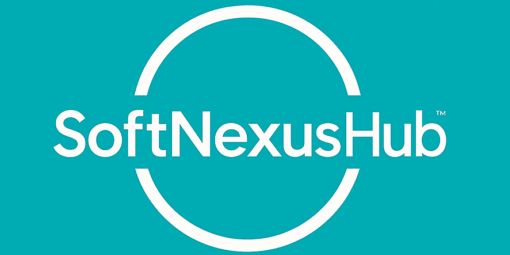
Back in July 2018, the tech industry witnessed a headline-making deal—Broadcom Inc. acquiring CA Technologies for nearly $19 billion. At the time, many analysts were surprised. After all, Broadcom was known mainly for its semiconductors, not enterprise software. So, why would a hardware giant suddenly pivot toward software? And what does this mean for businesses even today?
This article takes a closer look at the CA Technologies Broadcom merger, exploring its background, strategic goals, challenges, benefits, and long-term impact on the enterprise IT landscape.
A Quick Look at CA Technologies
Founded in 1976 as Computer Associates, CA Technologies grew into one of the biggest names in enterprise software. For decades, it provided IT departments with the tools needed to run complex infrastructures.
Some of CA’s specialties included:
- Mainframe and distributed computing management
- IT monitoring and workload automation
- DevOps and agile development solutions
- Identity and access security
Popular CA Technologies Products
- CA Workload Automation
- CA Application Performance Management (APM)
- CA Identity Suite
- CA Service Management
- CA Continuous Delivery Director
These solutions were widely adopted by financial institutions, government agencies, and Fortune 500 companies.
Broadcom: From Hardware Giant to Software Player
Broadcom Inc., headquartered in California, built its empire on semiconductors powering smartphones, networks, and data centers. Before the CA acquisition, Broadcom had already snapped up companies like:
LSI Corporation
Brocade Communications Systems
Avago Technologies (which merged with Broadcom Corporation)
However, acquiring CA signaled a big shift in Broadcom’s business model—from being a hardware-focused company to entering the lucrative enterprise software market.
Why Did Broadcom Buy CA Technologies?
Broadcom’s decision was rooted in long-term strategy rather than short-term profit. Here’s a side-by-side view:
| Broadcom’s Goal | How CA Technologies Helped |
|---|---|
| Diversify revenue | Reduced reliance on volatile semiconductor sales |
| Gain steady cash flow | Subscription-based software contracts ensured predictable income |
| Expand enterprise customer base | Instant access to Fortune 500 clients through CA’s relationships |
| Secure long-term contracts | CA had high renewal rates and strong customer retention |
| Compete with IBM & Oracle | Full-stack IT capabilities with hardware + enterprise software |
This move positioned Broadcom as a stronger player in digital transformation and IT infrastructure.
Market Reaction and Industry Impact
When the deal was announced, reactions were mixed. Broadcom’s stock fell temporarily, as investors questioned whether a hardware company could succeed in enterprise software.
But industry insiders quickly realized it signaled a larger trend: hardware companies were looking to blend with software for long-term stability. It also hinted at more hybrid mergers in the future.
Post-Merger Challenges
Mergers are never smooth, and this one came with hurdles:
- Cultural differences between chip engineers and enterprise software teams
- Customer concerns about reduced product innovation
- Rebranding and repositioning CA’s product line under Broadcom Software Group
Some customers worried Broadcom’s focus on efficiency would mean fewer upgrades or discontinued products.
Benefits of the Merger
Despite skepticism, the merger created tangible benefits:
- Broadcom became a full-stack infrastructure provider with software + hardware offerings
- Stronger cybersecurity and AIOps capabilities
- Operational efficiency, with streamlined R&D and reduced overlap
- A stronger competitive edge against IBM, Cisco, and Oracle
This blend allowed Broadcom to offer end-to-end IT operations management solutions.
What It Meant for Customers
For CA Technologies’ long-term customers, the impact was both positive and cautious:
Continued support for mainframe operations, still vital for banks and governments
New investments in hybrid cloud integration and AIOps
Concerns over slower innovation and discontinued niche products
Broadcom reassured clients by continuing to back mission-critical mainframe solutions.
Competitor Response
Broadcom’s pivot pushed rivals to act:
- IBM doubled down on Watson AIOps and Red Hat hybrid cloud integration
- Oracle reinforced its cloud-first database and enterprise solutions strategy
The acquisition reshaped the competitive landscape, putting Broadcom on the map as more than just a semiconductor company.
Bigger Picture: A Shift in Enterprise IT
The CA Technologies Broadcom deal was more than just a business move—it reflected a shift in enterprise IT priorities. Today, the focus is on:
- Hybrid infrastructure combining cloud and on-premises
- AI-powered operations for predictive monitoring
- Built-in security across hardware and software layers
Broadcom’s acquisition positioned it directly in this future-driven landscape.
Conclusion
The CA Technologies Broadcom merger looked unusual at first, but over time it has proven to be a strategic success. By combining hardware dominance with enterprise software expertise, Broadcom created a hybrid model that better serves modern enterprises.
For businesses, the message is clear: the future of IT lies in integrated solutions that balance performance, security, and scalability.
FAQs
1. When did Broadcom acquire CA Technologies?
Broadcom acquired CA Technologies in July 2018 for nearly $19 billion.
2. Why did Broadcom buy CA Technologies?
To diversify revenue, gain steady software income, and expand its enterprise customer base.
3. What happened to CA Technologies after the merger?
Its products were rebranded under Broadcom Software, with a focus on mainframes, DevOps, and IT operations.
4. How did customers react?
Some worried about innovation cuts, but Broadcom assured ongoing investment in mission-critical solutions.
5. How does the deal affect the tech industry?
It showed the growing importance of hardware-software integration and inspired more hybrid strategies across IT.
